Giveaway Time! Leave a comment after my article to be in the running to win one of two paperback copies of ‘In Bed with the Tudors’ by Amy Licence. Conditions of Entry below. Good luck!
Competition now closed!
The Mystery of Queen Anne Boleyn’s Second Pregnancy
By Natalie Grueninger
In most recent biographies, Anne Boleyn’s second pregnancy, at the most, occupies a couple of paragraphs. Eric Ives and David Loades conclude that it ended in a miscarriage, Alison Weir in The Six Wives of Henry VIII states that ‘it was either stillborn, or died very soon after birth’ (pg. 271), Antonia Fraser suggests that ‘the most likely end was a stillbirth: probably a month or so early’ (pg. 218), David Starkey sums it all up by stating that it ‘ended in miscarriage or still birth’ (pg. 553) and Paul Friedmann, writing in the late nineteenth century, concluded that ‘Anne had been mistaken about her condition’ (pg. 151) and had never been pregnant. Only in The Rise and Fall of Anne Boleyn, does the author, historian Retha Warnicke, go into some detail in her attempt to unravel the tapestry of secrecy shrouding the events of the summer of 1534.
While researching my debut book, In the Footsteps of Anne Boleyn, my co-author, Sarah Morris, and I examined what contemporary evidence exists and pieced together a tragic story.
Christmas 1533 at Greenwich was a jovial and lively affair. John Husee informed Lord Lisle that, ‘The King has kept a great court and is as merry and lusty as ever I see.’ On New Year’s Day there was the customary exchange of gifts, Queen Anne presented the king with:
A goodly gilt bason, having a rail or board of gold in the midst of the brim, garnished with rubies and pearls, wherein standeth a fountain, also having a rail of gold about it garnished with diamonds; out thereof issueth water, at the teats of three naked women standing at the foot of the same fountain.
Retha Warnicke believes that Anne’s gift ‘must be characterised as a fertility symbol.’ (pg.173) If Anne was in fact already hinting at her condition then we can assume that she became pregnant sometime around November 1533.
On 5 January, in the instructions to Nicholas Heath and Christopher Mont, who were being sent on embassy to the German princes, Henry praised his wife:
‘whose approved and excellent virtues, that is to say, the purity of her life, her constant virginity, her maidenly and womanly pudicity, her soberness, her chasteness, her meekness, her wisdom, her descent of right noble and high parentage, her education in all good and laudable thewes and manners, her aptness to procreation of children, with other infinite good qualities, more to be regarded and esteemed than the only progeny, be of such approved excellency as cannot be but most acceptable unto Almighty God, and deserve His high grace and favour, to the singular weal and benefit of the King’s realm and subjects.’
It seems that Henry was already aware that his wife was again pregnant, inspiring the reference to her ‘aptness’ to procreate children.
By 23 January 1534, imperial sources had been informed that Queen Anne was ‘again in the family way’ allegedly by a letter from the newly arrived English ambassador in France. Eric Ives postulates that if the ambassador was Lord William Howard, ‘the date of arrival must have been the beginning of December, suggesting that Anne became pregnant in November 1533.’ (Pg. 394) By 28 January, Eustace Chapuys was aware of Anne’s condition and on 29 January, it was observed that, ‘The King and Queen are merry.’
In February, Henry VIII met with Chapuys and confirmed the rumours of Anne’s pregnancy by saying that he believed he’d shortly have a son.
On 27 April, Anne’s receiver-general, George Taylor, wrote to Lady Lisle of the king and queen’s good health and of Anne’s ‘goodly belly’.
By April 1534, the pregnancy was common knowledge. The king, confident and beaming, expected a prince and ordered from his goldsmith, Cornelius Hayes, an elaborate silver cradle:
A silver cradle, price 16l. For making a silver plate, altering the images, making the roses underneath the cradle, the roses about the pillars, and new burnishing, 13s. 4d. For the stones that were set in gold in the cradle, 15s.; for fringes, the gold about the cushions, tassels, white satin, cloth of gold, lining, sypars and swadylbands, 13s. 6d. Total, 18l. 1s. 10d. The silver that went to the dressing of the Adam and Eve, the making of all the apples, the gilding of the foot and setting of the currall, 33s. 4d.
At around the same time, a portrait medal was struck to commemorate the anticipated birth of a son, it was inscribed with Queen Anne’s motto, The Moost Happi, Anno 1534 and A. R for Anna Regina. Since the baby did not survive, multiple copies were not commissioned, however, the prototype survives and is today stored in the British Museum.
In early June, Henry was in the midst of planning a trip to Calais to meet with Francis I. It was scheduled to take place on 20 August or soon after, presumably after Anne’s lying-in, again corroborating the argument that the queen had become pregnant sometime around November 1533.
On 26 June Sir Edward Ryngeley reports that the ‘King and Queen are merry’ at Hampton Court Palace. However, quite suddenly, on 2 July Henry leaves Anne behind and moves to The More, where he summoned Thomas Cromwell and Anne’s uncle, the Duke of Norfolk, to meet him on 5 July. At around this time the decision was made to send the queen’s brother, George Boleyn, ‘with all speed’ on a special embassy to France, in order to delay the planned meeting between Henry and Francis on account of the queen’s advanced pregnancy and her desire to have her husband, the king, by her side at this time.
Lord Rochford’s instructions were as follows:
1.Rochford is to repair to the French king with all speed, and in passing by Paris to make the King’s and Queen’s hearty recommendations to the queen of Navarre, if she be there, and say that the Queen his mistress much rejoices in the deeply-rooted amity of the two kings, but wishes her to get the interview deferred, as the time would be very inconvenient to her, and the King is so anxious to see his good brother that he will not put it off on her account. Her reasons are, that being so far gone with child, she could not cross the sea with the King, and she would be deprived of his Highness’s presence when it was most necessary, unless the interview can be deferred till April next. Rochford is to press this matter very earnestly, and say that the King having at this time appointed another personage to go to his good brother, the Queen, with much suit, got leave for Rochford to go in his place, principally on this account.
2. That there was nothing she regretted at the last interview so much as not having an interview with the said queen of Navarre ; and she hopes she may be able to come to Calais with her brother in April next, if the interview be deferred till then.
It seems very likely that the proposed meeting was cancelled because sometime between 26 June and 2 July, disaster struck – Anne was delivered of a stillborn baby, after which the king, no doubt crushed by his wife’s failure to provide him with a living heir, left her behind at Hampton Court and commenced his already delayed summer progress.
In our book, Sarah Morris and I suggest that:
‘No longer able to face Francis, who was already the father of three healthy sons, a cover story was created to save face and the whole event swept under the carpet.’ (Pg. 167)
On 18 July we hear from John Husee that ‘The King is now at Oking [Woking Palace Surrey], and comes hither on Tuesday, and will tarry here and at Eltham till Friday, when he will meet with the Queen at Guildford. Southwark, 18 July.’
The king was planning to visit the Princess Elizabeth at Eltham Palace before joining the queen at Guildford, where they were reunited sometime toward the end of July or the beginning of August. The king and queen had been apart for more than a month, their longest period of separation since 1528, when Anne had retired from court in anticipation of the arrival of Cardinal Campeggio.
It is not until the end of September 1534, that Chapuys reports that ‘the lady’ (Anne Boleyn) was not going to have a baby after all. At the same time we hear through Chapuys that rumour had it, Henry doubted whether the queen had ever been pregnant, an idea explored by J. Dewhurst in Medical History.
Dewhurst suggested that Anne might have suffered from a case of pseudocyesis or false pregnancy, a rare condition where a woman believes that she is carrying a baby and shows pregnancy-like symptoms when she is not pregnant. The condition is yet to be fully explained, however, psychologists believe that most women who experience false pregnancy are often experiencing stress and anxiety, along with an extremely strong desire to be pregnant.
Having only just given birth to a healthy daughter in September 1533, I don’t believe this to be a reasonable argument. There is absolutely no evidence to suggest that Anne was under any stress around the time of her alleged second pregnancy. On the contrary, the reports we have paint the picture of a healthy and happy couple.
In the notes section of his biography of Anne Boleyn, Eric Ives states:
“That it was a miscarriage and not a stillbirth or neonatal death is indicated by the queen not having ‘taken her chamber’” (pg. 394)
That there is no record of the queen having ‘taken her chamber’ is indisputable, however, does this prove that Anne did not suffer a stillbirth? Not necessarily.
Ives himself stated that it’s likely Anne was pregnant by November 1533, in which case by the beginning of July, when it’s generally accepted that she lost the baby, she would have been around 8 months pregnant.
In modern terms, a miscarriage is generally defined as the loss of a baby before 20-24 weeks; the death of a fetus at 8 months gestation is referred to as a stillbirth. In this case the mother still needs to go through labour and delivery in the same manner as mothers delivering a live baby.
In light of the evidence, it seems likely that Anne went into labour prematurely sometime between 26 June and 2 July, explaining why no records survive of the queen’s confinement. This leaves open the possibility that the loss was so devastating, so damaging, especially considering that Henry was still trying to prove to the world the righteousness of his marriage, that all present were sworn to secrecy and the whole incident erased from history.
Unless one has experienced such heartbreak, it’s difficult to imagine the overwhelming emotional and physical pain that Anne must have felt. The baby would have been well formed and the sex determinable, although, the details were not recorded. The king left Hampton Court in all haste and abandoned his grieving wife. Was the loss of an heir the reason for their extended and uncharacteristic separation? The silence of the royal nursery and the empty silver cradle, perhaps, too much for even a hardened king —and one well-versed in loss— to bear.
This event must have brought memories of Katherine of Aragon’s tragic obstetric history flooding back and sowed a seed of doubt in the king’s mind that would eventually grow to consume him. Anne had promised Henry sons and heirs but had only delivered a daughter and a stillborn baby. In the king’s eyes, she’d failed him; with Henry’s insecurities awakened, there would be no room for further disappointments.
References & Sources Calendar of State Papers, Spain, Volume 5 Part 1 – 1534-1535 Letters and Papers, Foreign and Domestic, Henry VIII, Volume 6 – 1533. Letters and Papers, Foreign and Domestic, Henry VIII, Volume 7 – 1534. Fraser, A. The Six Wives of Henry VIII, 1992. Friedmann, P. Anne Boleyn, trans. J. Wilkinson, 2013. Grueninger, N. & Morris, S. In the Footsteps of Anne Boleyn, 2013. Ives, E. The Life and Death of Anne Boleyn, 2004. Loades, D. The Six Wives of Henry VIII, 2010. Starkey, D. Six Wives, 2003. Warnicke, R. The Rise and Fall of Anne Boleyn, 1989. Weir, A. The Six Wives of Henry VIII, 2007. The Mystery of Queen Anne Boleyn’s Second Pregnancy Good luck! Conditions of Entry For your chance to win a paperback copy of In Bed with the Tudors you must be subscribed to On the Tudor Trail’s newsletter (if you are not already, sign up on our homepage). Then simply leave a comment after my post between now and January 22, 2014.Don’t forget to leave your name and a contact email.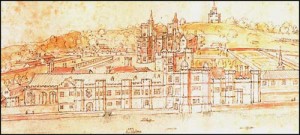

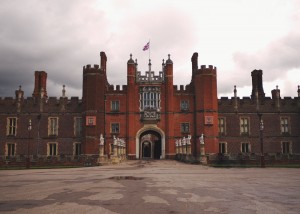

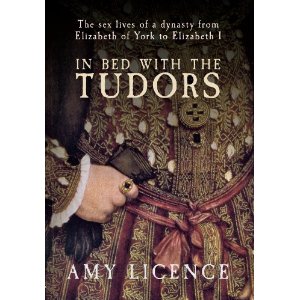


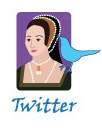




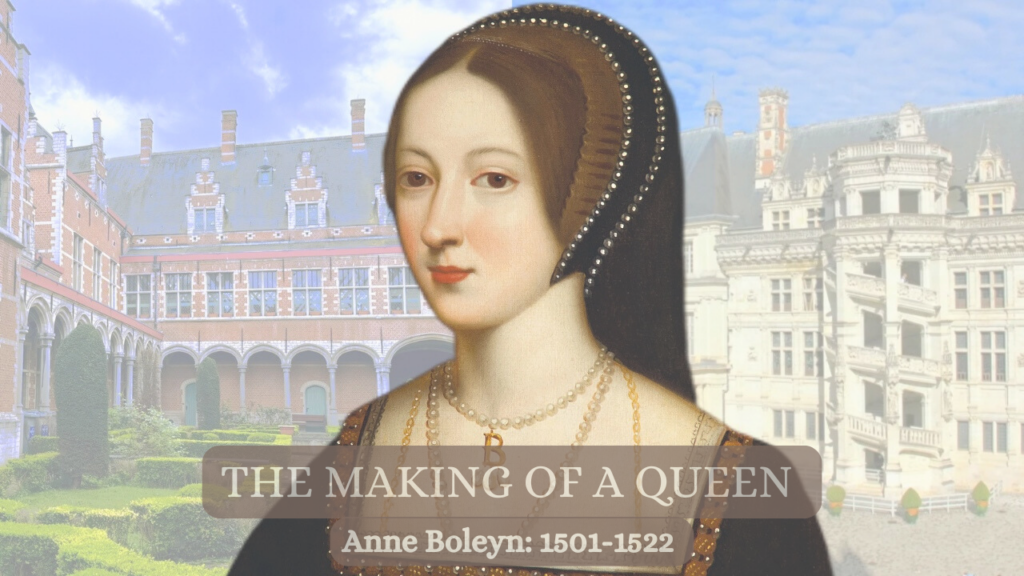
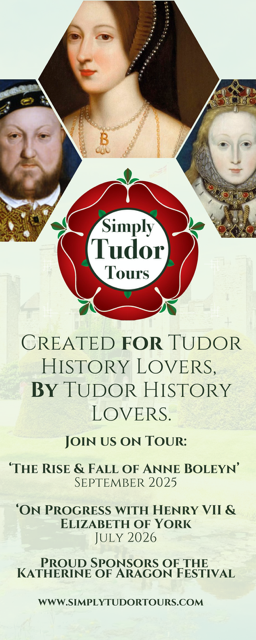













I too have read some articles of medical conditions that Henry may have had that could have caused his wives to have so many miscarriages. I find them quite fascinating and wish we could know for sure.
I would love to win this book!! I’m such a huge fan of the Tudors & Anne Boleyn especially. This time period is my favorite in all history! I love everything about it!!
This is absolutely fascinating! I can’t get enough of things like this. It shows just how informed writers like these are and the patience of getting things right. I applaud your hard work. I think I have to read this article another couple times!
I love any bnook on Tudor history and would love this one. Brilliant article.
Would love to add this book to my growing Tudor collection 🙂
love the Totor history
So much controversy. I wonder if the truth will ever be known.
I have a fascination for all things ‘Tudor’!! This book would be a great addition to my Tudor Collection 🙂
What a fascinating article………. I’ve often wondered why there are not more writings on the second pregnancy. I would give anything to be a fly on the wall at this turning point. I feel like Anne was ‘thrown away’ more in heart break or pain than in anger. Having lost two babies, i can relate, if only in part, to the agony Anne must have felt at the loss of her second child. Thank you for this article!
The book sounds like a great read!
Great article, please enroll me in the contest!
Very interesting article. I continued to be so intrigued by what I read about the Tudors. I am really hoping I am accepted into Exeter for my PhD. What a great place to write my dissertation on Shakespeare and see up close the locale of the Tudors and Renaissance England!
Great article! Very well written!
It’s certainly too bad that better records were not kept of births and deaths, their details and circumstances. It would have given us a great deal more understanding of their lives. I’m sure that there were ways to cover up a lot of ‘unwanted’ occurrences and so we really have no way of knowing 100 percent what is the complete truth. It’s quite fascinating.
I can’t wait to read the book!
Queen Anne is my favorite Queen to study about. I love this article and found it full of information! Thank you for posting this.
Absolutely fascinating. It’s truly sad that to think what became of Anne and I can’t help, but wonder if the pregnancy had gone well what could have been. This has always been an area I was fascinated in when it comes to Anne
Great article! I am so fascinated with the Tudors and that time period! I would love a copy!
would luv to win
Great article! I really enjoy the various theories on Anne’s pregnancies. It seems hers was a plight doomed from the beginning. My heart goes out to the other wives as well.
I want a copy!! Love the Tudors! 🙂
Thanks for an interesting article. I’d love to read this book.Thanks for the chance.
The article is really interesting, as usual! It is quite a complicated and delicate topic to deal with. Thanks for the giveaway 🙂
Poor Anne she did not stand a chance after loosing the baby.
I am very interested in anything tudor. I would love to add this book to my collection.
This article was really good. I would love to win a copy of this book. I enjoy reading everything I can about this era.
great article!!!! I love reading everything about Anne!
I loved this article!
First time EVER poster, rarely winner but fingers crossed I win! I love Tudor history.
Fascinating article. I’m very new to Tudor history.
Great article! Can’t wait to read the book! This era completely fascinates me! Thanks for the chance at winning the book. 🙂
Anne Boleyn is one of the women in history I idolize the most. Thank you so much for shedding some light and insight onto her story! Can’t wait to read the book!
I appreciate all the time you took to research this! Thanks for sharing.
I love what toy have to say on Qunne Anna.
I think that Anne had it hard she was Qunne and she had to have a boy if not than you are done.
Women back than had is so hard and to be pregnt back then was vere so much hard thay did not have the thing we have today all so the Qunne had a job to do and that was to have as many boys as she could. that is a lot of presser and that could make any one have a stillborn.
Fran
Is there evidence of any other false pregnancy at court at that time? Curious
Love the article really fascinated with anything Tudor
Love your page… look forward to it everyday ….I’ve read tons of books on Anne I feel she was way ahead of her time and could’ve been so much more than what her family put her through…thank you so much for the posts and articles…
Great article !!!
I loved your article about Anne Boleyn’s second pregnancy. I would love to read “In Bed with the Tudors.”
Spent all last night trying to get my post through and it has not appeared it seems;-(
Was blown away this is an Australian site! I was confused when I saw the greeting cards stating “AUD” dollars…
I’ve just found your site and I’m an Anglophile and would dearly love to read about Ann Boleyn.
I love all Tudor history 🙂
My comment does not seem to have appeared?
I would love to win the book – I love the Tudor period and Anne especially
Really enjoyed reading your article about Anne’ssecond pregnancy. Don’t want a paperback. Ramona
Thanks you so much Natalie!, I´m very happy that I won, I can´t belive it! 😉
I Can’t wait to get my hands on this book!
Thanks again!!!!! 😉
Yani, Congratulations!!! 🙂 Great contest, Natalie!
This is the 2nd time I,ve read your well written post, Natalie. It just makes me so sad to be made aware of how poor abandoned Anne must have felt. She went from “the Most Happy” to the most miserable in 1000 days. Today is the anniversary of Henry’s death. Only made it to 55. Of course that’s longer than Anne had, but I’m glad he died somewhat early. . .hateful, selfish man!! I would love to win a copy of Amy’s book as I do not have In Bed With the Tudors. I have 2 other Licence books and they are wonderful. Thank you so much for emailing me about this giveaway. Jacqueline Baird
I’m sure I’m to late to win this drawing but I just got your email. I’m a huge fan of the period and would love to read your book. Thank you for taking the time to email me about this.
Hi Brandi, sorry the giveaway is closed. Best wishes, Natalie.
That was a lot of info. Thanks so much.
It is interesting how he blamed his wives but I wonder how he felt towards God, did he blame him at all or ever himself???
Always interested in Tudor history!